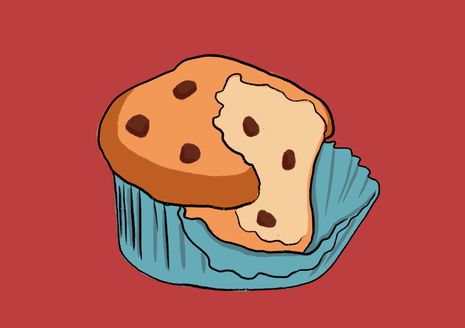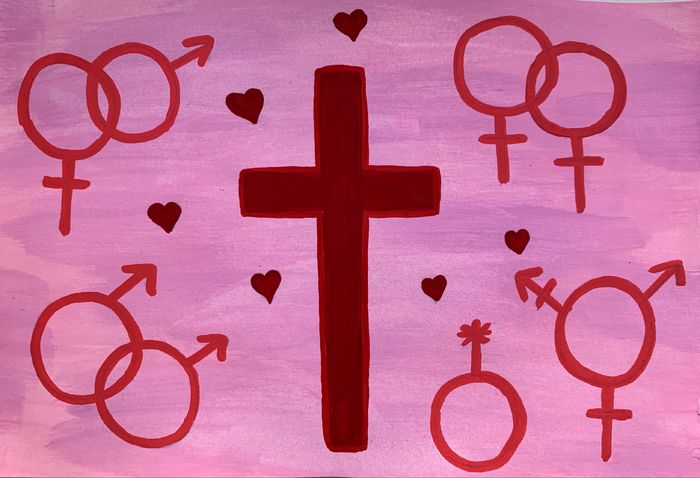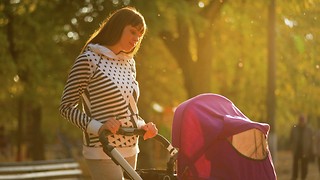Eating disorders come in all shapes and sizes
Editor Gaby Vides reflects on her experience of atypical anorexia nervosa and the importance of not internalising pre-determined ideas of eating disorders

Content Note: This article contains detailed discussion of eating disorders
I refused to admit I had an eating disorder. No, this isn’t really true: I couldn’t see I had an eating disorder. Far from it, I considered myself the image of health, truly believing there was nothing wrong with me. I still don’t really know why this is. I think it’s in part that the logic of an eating disorder becomes so all-consuming. Deceit becomes a part of your life. Going out with friends at lunch and only buying a small pot of cucumber is put down to having a big breakfast, returning home for dinner and only eating rice cakes is explained as a result of having a big lunch. When you’re in the clutches of an eating disorder these spirals of hunger and ‘getting away with it’ become bizarrely addictive. Your focus is so fine-tuned to your eating habits that the irrationality of starving yourself becomes rational.
Having attended an all-girls school for sixth form, we frequently had talks on the dangers of eating disorders. I was no stranger to valuable dialogues on body image, self-care and healthy eating. Yet these talks failed to convey the variety of manifestations an eating disorder can take.
I had grown up in a community where many of my friends had eating disorders, or even more insidiously disordered eating and orthorexic tendencies. These subtle patterns of irregular and infrequent eating were pervasive; close friends would often force each other to ‘split a muffin, or I won’t eat it’ or have a small salad for lunch because they drank too much over the weekend. This behaviour was often neatly packaged and excused under the guise of veganism, vegetarianism or the latest fad diet.
At the time, we were too young and blissfully naive to label these disordered behaviours as eating disorders - with hindsight, I can appreciate that noticeably disordered behaviour was brushed off because these friends were ‘still eating three meals a day’ or just ‘didn’t like the options available’. These obsessions over food and cycles of guilt about eating the ‘wrong’ thing are not healthy. I’m sure for a lot of individuals this sort of dieting behaviour fades away with age, but for too many it was certainly the gateway to diagnosable disorders or unresolved eating issues.
“Without framing eating disorders as a non-linear continuum or a never-ending kaleidoscope of difference, there is a danger of actively stifling understandings of how eating disorders develop.”
Only my boyfriend managed to notice my eating disorder, even when I didn’t. He encouraged me to go to the GP, where, after having a check-up, I was told to immediately go to hospital to have my bloods taken and to check I had not inflicted any long-term harm on myself. Even after this whirlwind day, routine check ups, therapy, and a diagnosis of atypical anorexia nervosa, I held on to the delusion that my disorder wasn’t really that bad. I took the ‘atypical’ aspect of my diagnosis as proof of this. Atypical anorexia nervosa is a type of eating disorder in which someone has all the characteristically identifiable traits of anorexia but their weight remains within a ‘normal’ range. My form of atypical anorexia also included occasional periods of bulimia and binge eating. Rather than taking comfort in my diagnosis I found it only made my condition more uncertain, perpetuating the anxieties around my weight that my eating disorder sought to solve. I was confused: this is not what I was told an eating disorder looked like. I felt like I was doing an eating disorder ‘wrong’, that somehow because of my bulimia and binge eating tendencies my eating disorder wasn’t legitimate. Even now there is strange shame in admitting to my experiences of these less spoken about aspects of eating disorders.
While we are certainly engaging in more important conversations around eating disorders, we still have a long way to go to bring to the fore the diverse realities of this mental illness. I always imagined someone with an eating disorder as being like a walking skeleton; their skin literally slouching off their bones, their face aghast and their hair patchy and dishevelled. This picture of eating disorders was reinforced by my school’s narratives and medical professionals I encountered: overly focused on the physical, visible, aspects of eating disorders. And while there is certainly a set of individuals whose experience of an eating disorder is that of pure starvation, and I in no way intend to discount this experience, there is also a significant proportion of eating disorder sufferers who don’t fit neatly into this archetypal understanding - myself included.
These narratives, which almost exclusively centre around anorexia and the extreme thinness associated with it, often close off any acknowledgement that eating disorders exist across a spectrum. Without framing eating disorders as a non-linear continuum or a never-ending kaleidoscope of difference, there is a danger of actively stifling understandings of how eating disorders develop. There is no prescribed way to have an eating disorder, yet weight requirements for what constitutes an eating disorder continue to be used, preventing many of those suffering from receiving much-needed help. A recent report by the Women and Equalities Committee has in fact called for the use of Body Mass Index - a measure of weight and height used to calculate a ‘healthy’ weight - in diagnosing eating disorders to be scrapped. With a surge in the numbers of individuals suffering from eating disorders during the pandemic, it is urgent that we stop medicalised definitions denying people treatment that they desperately need.
Looking back on the journey of my eating disorder, it’s hard to believe I couldn’t see my self-inflicted deterioration. While there are still days I really struggle, I’m trying and learning to be kind to myself. Recognising the legitimacy of my disorder was the first step.
 Features / Should I stay or should I go? Cambridge students and alumni reflect on how their memories stay with them15 December 2025
Features / Should I stay or should I go? Cambridge students and alumni reflect on how their memories stay with them15 December 2025 News / Dons warn PM about Vet School closure16 December 2025
News / Dons warn PM about Vet School closure16 December 2025 News / SU reluctantly registers controversial women’s soc18 December 2025
News / SU reluctantly registers controversial women’s soc18 December 2025 News / Cambridge study finds students learn better with notes than AI13 December 2025
News / Cambridge study finds students learn better with notes than AI13 December 2025 Arts / A beginner’s guide to Ancient Greek tragedy16 December 2025
Arts / A beginner’s guide to Ancient Greek tragedy16 December 2025









